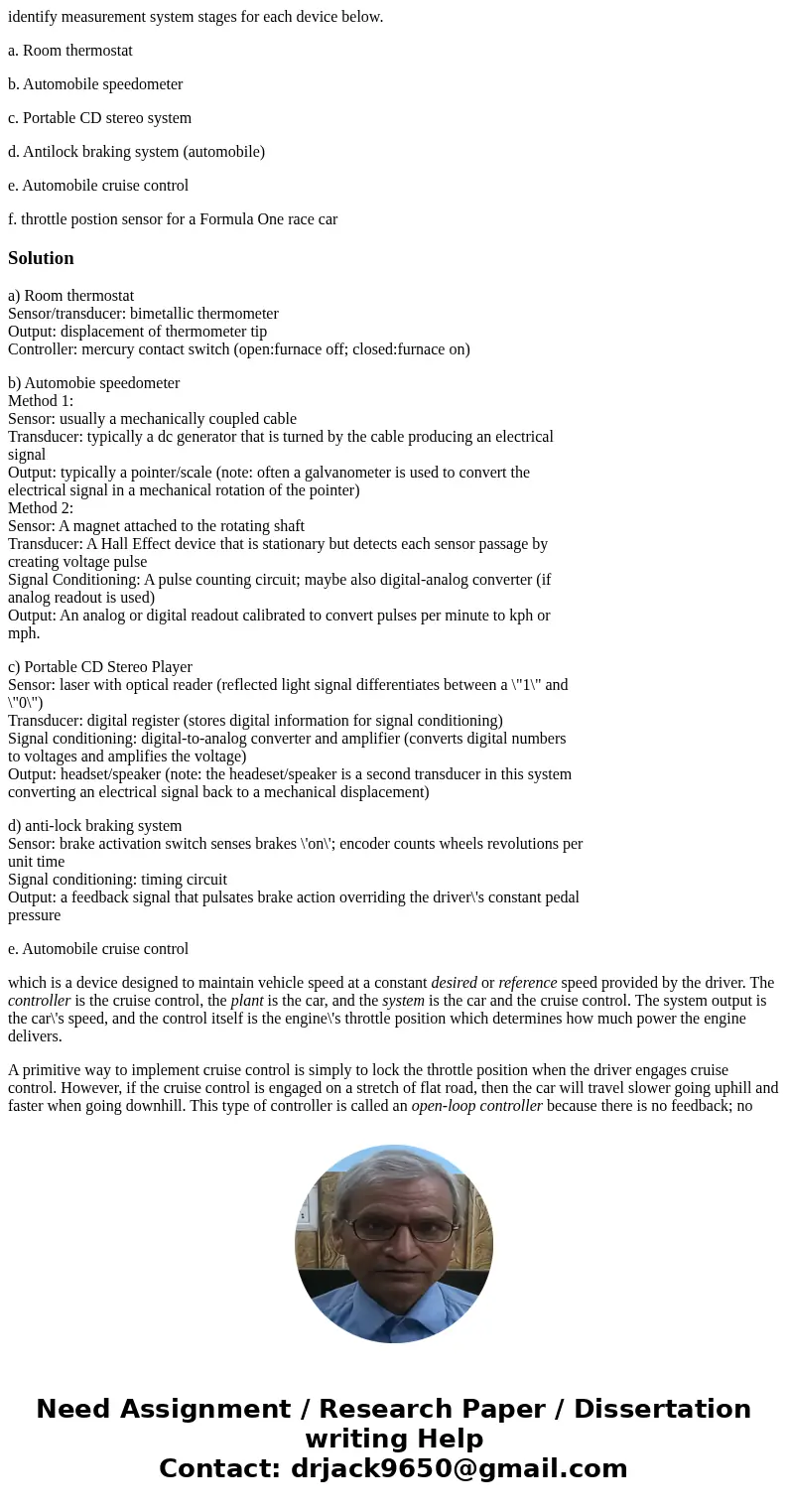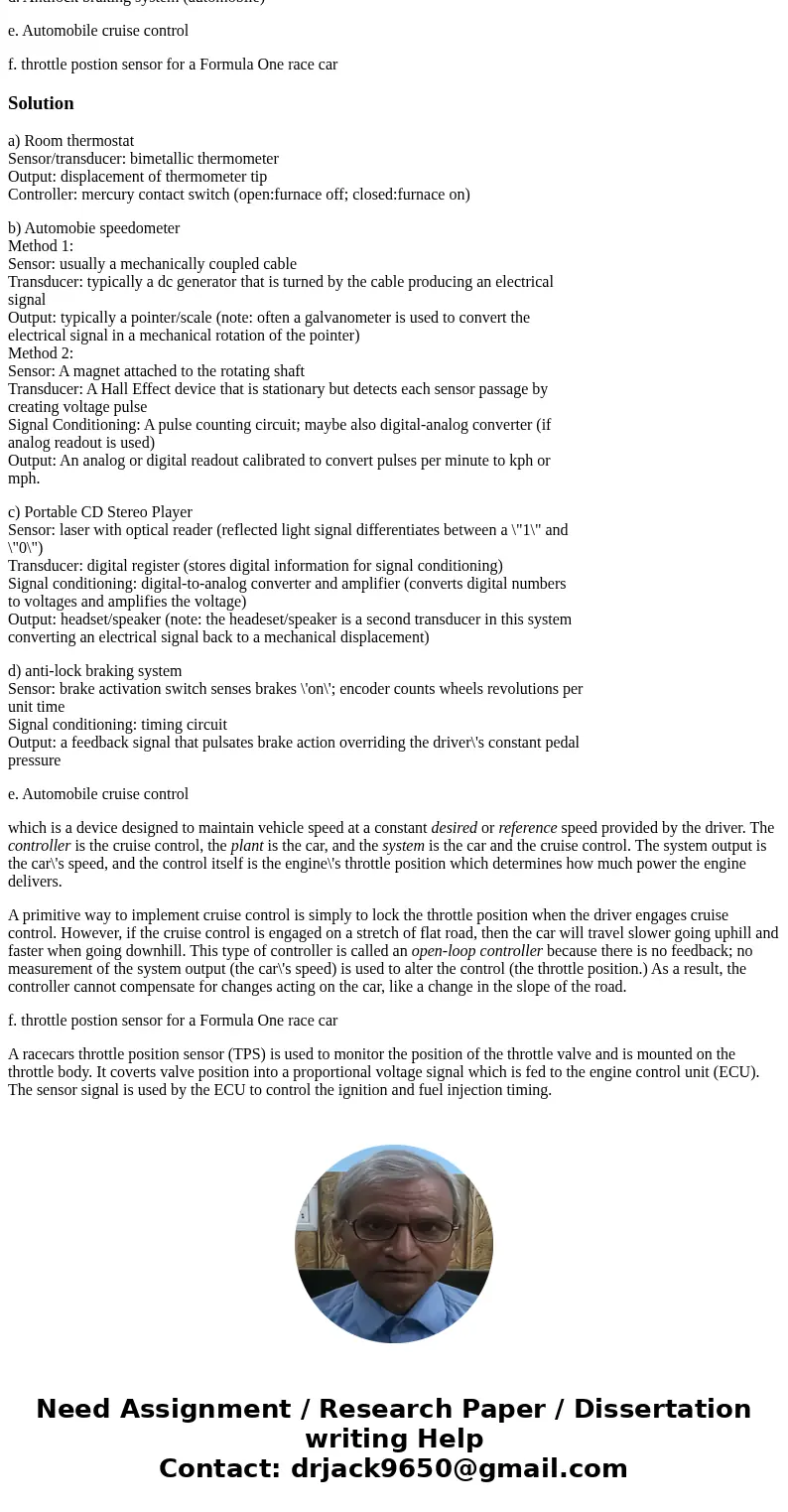identify measurement system stages for each device below a R
identify measurement system stages for each device below.
a. Room thermostat
b. Automobile speedometer
c. Portable CD stereo system
d. Antilock braking system (automobile)
e. Automobile cruise control
f. throttle postion sensor for a Formula One race car
Solution
a) Room thermostat
Sensor/transducer: bimetallic thermometer
Output: displacement of thermometer tip
Controller: mercury contact switch (open:furnace off; closed:furnace on)
b) Automobie speedometer
Method 1:
Sensor: usually a mechanically coupled cable
Transducer: typically a dc generator that is turned by the cable producing an electrical
signal
Output: typically a pointer/scale (note: often a galvanometer is used to convert the
electrical signal in a mechanical rotation of the pointer)
Method 2:
Sensor: A magnet attached to the rotating shaft
Transducer: A Hall Effect device that is stationary but detects each sensor passage by
creating voltage pulse
Signal Conditioning: A pulse counting circuit; maybe also digital-analog converter (if
analog readout is used)
Output: An analog or digital readout calibrated to convert pulses per minute to kph or
mph.
c) Portable CD Stereo Player
Sensor: laser with optical reader (reflected light signal differentiates between a \"1\" and
\"0\")
Transducer: digital register (stores digital information for signal conditioning)
Signal conditioning: digital-to-analog converter and amplifier (converts digital numbers
to voltages and amplifies the voltage)
Output: headset/speaker (note: the headeset/speaker is a second transducer in this system
converting an electrical signal back to a mechanical displacement)
d) anti-lock braking system
Sensor: brake activation switch senses brakes \'on\'; encoder counts wheels revolutions per
unit time
Signal conditioning: timing circuit
Output: a feedback signal that pulsates brake action overriding the driver\'s constant pedal
pressure
e. Automobile cruise control
which is a device designed to maintain vehicle speed at a constant desired or reference speed provided by the driver. The controller is the cruise control, the plant is the car, and the system is the car and the cruise control. The system output is the car\'s speed, and the control itself is the engine\'s throttle position which determines how much power the engine delivers.
A primitive way to implement cruise control is simply to lock the throttle position when the driver engages cruise control. However, if the cruise control is engaged on a stretch of flat road, then the car will travel slower going uphill and faster when going downhill. This type of controller is called an open-loop controller because there is no feedback; no measurement of the system output (the car\'s speed) is used to alter the control (the throttle position.) As a result, the controller cannot compensate for changes acting on the car, like a change in the slope of the road.
f. throttle postion sensor for a Formula One race car
A racecars throttle position sensor (TPS) is used to monitor the position of the throttle valve and is mounted on the throttle body. It coverts valve position into a proportional voltage signal which is fed to the engine control unit (ECU). The sensor signal is used by the ECU to control the ignition and fuel injection timing.


 Homework Sourse
Homework Sourse